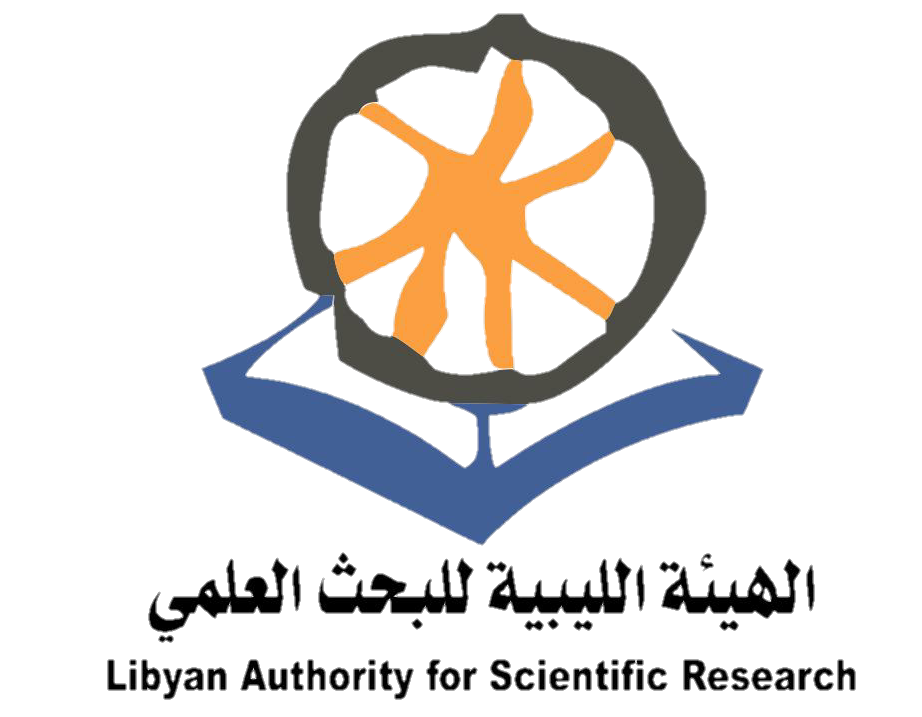Morphometric and proximate traits of three commercial fishes of different grades (Seriola dumerili, Pagrus pagrus and Liza ramada) in summer and winter, eastern Libya Mediterranean Sea
Keywords:
Seriola dumerili,, Pagrus pagrus,, Liza ramada,, morphometry,, Length-weight relationship,, condition factor,, proximate compositionAbstract
Fish morphometric traits and proximate composition of flesh were established for Seriola dumerili (first class), Pagrus pagrus (second class) Liza ramada (third class) caught from Al-Hamama coast, eastern Libya Mediterranean Sea, during summer and winter 2015. Morphometric traits and condition factors, were established by species and seasons. Mean total length of S. dumerili was 32.31 and 36.26 cm in summer and winter consecutively (corresponding weights: 968.31 and 1180.79g), that of P. pagrus was 29.30 and 29.34cm (329.09 and 322.13g), and that of L. ramada was 26.12 and 15.75cm (288.17 and 131.27g). Differences between total length in summer and winter were not significant for S. dumerili and P. pagrus but significant for L. ramada. Morphometric traits and condition factors, were established by species and seasons. Most morphometric parameters correlated positively with each other. Some parameters correlated negatively. The length (TL)-weight (TW) relationships in summer and winter were TW=0.0385 TL 2.8552, R²=0.9638 and TW=0.0029 TL 3.5575, R²=0.9181 consecutively for S. dumerili, TW=0.0532 TL 2.5513, R²=0.9793 and TW=0.114 TL 2.3304, R²=0.9729 for P. Pagrus, and TW=0.3712 TL 2.0169, R²=0.9476 and TW=0.2763 TL 2.1804, R²=0.9539 for L. Ramada. Proximate traits of the three species in summer and winter were established. Species effect on all proximate traits (flesh moisture, protein, fats and ash) was significant. The season effect was only significant for moisture. The interaction between the species effect and the season effect on moisture was not significant but was significant for all the other traits. Protein, fats and ash correlated positively with each other and negatively with moisture.
References
References:
van Eys, J. E. (2012). Manual of quality analysis (- USSEC) for soybean products in the feed industry. 2nd Edition. Ph.D. GANS Inc., 24 Av. de la Guillemote, 78112.
Ali, Randa Rajab. (2008). biological studies on Pagrus pagrus from Sosa (El-Gabal El-Akadar), Libya. M Sc Thesis. Department of Marine Resources Faculty of Natural Resources and Environmental Sciences, University of Omar Al Mukhtar. Albaida, Libya
Ibrahim, S. M. (2013). Characterization and biological study on some species of Family Sparidae in Ain El-Ghazala Gulf of eastern Libya. M. Sc., Faculty of Science, Omar Al-Mukhtar University, Albaida, Libya.
Mohammed, Amena A., Lutfi M. A. Musa, Ramadan A. S. Ali. Abdalla N. Elawad and Sayed M. Ali. (2016). The length weight relationship and condition factors of the thin lip mullet Liza ramada and the flathed grey mullet Mugil cephalus (Mugilidae) fishes from Ain El-Ghazala lagoon, eastern Libya. International journal information research and review, June, 2016. Vol.03, issu, 06, pp. 2504-2507, June, 2016.
Buzaid, Esam M. K, Sayed Mohamed Ali, Mohamed E. Elmor. (2017). Characteristics of bottom trawling by catch in Benghazi coastal area, eastern Libya Mediterranean Sea. Journal of Gold Scientific Research 2 (2017) 24-34
S.F.S.R. (2010). Scientific field survey report for the development of marine protected areas in Libya Ain El Ghazala and Bomba Bay. 20-27 September 2010
Reynolds, J. E., Haddoud, D. A., Vallet, F., (1995). Prospects for aquaculture development in Libya, Lib. fish field documents N 9. Tripoli / Rome, FAO. FAO. 94p. Fl: DP/LIB/88/009 - Fl: GCP/LIB/021/lsDB, Field Document 9 (En).
Ekwelha, S. A. (2008). Environmental and biological studies on juvenile commercial fishes in EL- Hamamh coast (EL- Gabal EL- Akadar), Libya.
Le-Cren, E. D. (1951). The length – weight relationship and seasonal cycle in gonad weight and condition in the perch (Perca fluviatitis). J. Anim. Ecol. 20:201 – 219.
Ricker, W. E. (1975). Computation and interpretation of biological statistics of fish populations. Bulletin of fisheries research board of Canada 191. 382 pp.
Letourneur, Y.; Kulbicki, M. and Labrosse, P. (1998). Length-weight relationships of fish from coral reefs and lagoons of New Caledonia, southwestern Pacific Ocean: an update. Naga ICLARM Q. 21(4):39-46.
Fulton, F. (1902). Rate of growth of sea fishes. Scient. Invest fish. Div. Scot Rep. 20.
Clark, F. N. (1928). The weight length relationship of the California saerdine (Sardina coarulea) at San-Pedro. Division of fish and game of California. Fish bull.no.12-59.
Wassef, Elhama and M. B. Shehata, (1991). Biochemical Composition of Gilthead Bream Sparus aurata L. from Lake Bardawil (Egypt). J.K.A.U.: Mar. Sci., Vol. 2, pp. 111-122 (1411 A.H./1991 A.D.
Folch, J., Lees, M., and Sloane Stanley, G.H. (1957). A simple method for the isolation and purification of total lipids from animal tissues. J. Biol. Chem. 226:497-509.
Mohamed, Nesma Idres, (2015). Biological study on Seriola dumerili from Al-Hamama coast, Eastern Libya. M.Sc., Faculty of Science, Omar Al-Mukhtar University, Albaida, Libya.
Khaleefi, Manal M., (2016). A study of some population dynamic characteristics of Liza ramada (Risso, 1826) in Benghazi coast, Libya. M Sc. Thesis, Omar Al-Mukhtar University, Albaida, Libya.
Kožul, A., Skaramuca, C., Kraljević, K., Dulčić, A. and Glamuzina, (2008). Age, growth and mortality of the Mediterranean amberjack Seriola dumerili (Risso 1810) from the south-eastern Adriatic Sea. Journal of Applied Ichthyology. 17, (3): 134-141.
Kulbicki, M., G. Mou Tham, P. Thollot and L. Wantiez, (1993). Length-weight relationships of fish from the lagoon of New Caledonia. Naga ICLARM Q. 16(2-3):26-29.
Cavaliere, A., Crisaf, E., Faranda, F, Greco, G., Manganaro, A. and Mazzola, A. (1989). Collection of fingerlings and rearing of Seriola dumerili in tanks. Aquaculture. A biotechnology in progress. De Pauw. Jaspers E. Ackefors H., Wilkins N. (EDS). European Aquaculture Society. I-II:119-123.
Greco, S., Caridi, D., Cammaroto, S. And Genovese, L. (1993). Preliminary studies on artificial feeding of amberjack fingerlings. Production Environment and quality. Bordeaux Aquaculture G. Barnabe and P. Kesemond Eds EAS Special Publ. N. 18:247-254.
Niklosky, G. V. 1963. The ecology of fishes. Academic press London, New York, 352pp.
Roo, F. J. Scorro, M, S. Izquierdo, M. J. Caballero, C. M. Hernandez-Cruz, Fernandez and Palaccios, H. F. (1999). Development of red porgy Pagrus pagrus visual system in the diges tive tract and larval feeding habits. Aquaculture 179: 499-512.
Gillanders, B. M., Ferrell, D. J. and Andrew N. L. (2010). Size at maturity and seasonal changes in gonad activity of yellowtail kingfish (Seriola lalandi; Carangidae) in New South Wales, Australia. Mar Aqua cult. 22:457-468.
Mehana, F. S. (2006). Fisheries management of the thin lip grey mullet Liza ramada and golden grey mullet L. aurata from lake Bardail, J. Aquat. Bioi & fish., Voi 10, No.2:33-53 (2006) EGYPT.
Ahemed, A. H. (1987). Fish biology. University of El Basra, El Basra, Iraq: pp. 279.
FAO (2002). Chemical composition. Quality and quality changes in fresh fish. Available fromhttp://www.fao.org/docrep/v7180e/V7180E05.ht m
Noël L, Chafey C., Testu C., Pinte J., Velge P., Guerin T., (2011). Contamination levels of lead, cadmium and mercury in imported and domestic oysters and large crab species consumed in France: differences between white and brown meat. J. Food. Comp. Anal., 24: 368–375.
Roy P. K, Lall S. P., (2006). Mineral nutrition of haddock Melanogrammus aeglefinus (L.): a comparison of wild and cultured stock. J. Fish. Biol., 68: 1460-1472.
Öksüz, A., (2012). Comparison of meat yield, flesh color, fatty acid, and mineral composition of wild and cultured Mediterranean amberjack (Seriola dumerili, Risso 1810). Journal of FisheriesSciences.com E-ISSN 1307-234X.
Mastoraki, M., Kotzamanis Y., Ilia V., Antonopoulou E. and Chatzifotis S., (2015). Effect of fish meal replacement by plant proteins supplemented with graded levels of crystalline amino acids on growth, energy and nutrient retention of greater amberjack (Seriola dumerili). Aquaculture Europe 2015Rotterdam, Netherlands.
Dawood, M. A., Koshio S., Ishikawa M., and Yokoyama S., (2015). Effects of Partial Substitution of Fish Meal by Soybean Meal with or without Heat-Killed Lactobacillus plantarum (LP20) on Growth Performance, Digestibility, and Immune Response of Amberjack, Seriola dumerili Juveniles. Hindawi Publishing Corporation BioMed Research International Volume 2015, Article ID 514196, 11 pages. http://dx.doi.org/10.1155/2015/514196
Miniadis-Meimaroglou S, Dimizas C., Loukas V., Moukas A. , Vlachos A. , Thomaidis N., Paraskevopoulou V. , Dasenakis M., (2007). Proximate composition, fatty acids, cholesterol, minerals in frozen red porgy. Chemistry and Physics of Lipids [17 Jan 2007, 146(2):104-110] DOI: 10.1016/j.chemphyslip.2006.12.009.
Schuchardt, D., Vergara, J. M., Fernandez-palacios H., Kalinowski C.T., Hernandez-cruz C. M., Izquierdo M. S., and Robaina L., (2008). Effects of different dietary protein and lipid levels on growth, feed, utilization and body composition of red porgy (Pagrus pagrus) fingerlings. Aquaculture Nutrition 2008 14; 1–9 doi: 10.1111/j.1365-2095.2007.00484. x.
Romero, G. J., (2011). Evaluation of alternative ingredients as fish meal replacers in on-growing diets for red porgy (P. pagrus). Thesis for the degree of Doctor of Philosophy University of Las Palmas de Gran Canaria, 2011.
Manganaro, A., Sanfilippo M., Fortino G., Dapra F., Palmegiano G. B., Gai F., Lembo E., Reale A. and Ziino M., (2012). Artificial pigmentation and flesh quality in red porgy (P. pagrus). Manganaro et. al. International Aquatic Research ,4:15. httb://www.intaquares.com/content/4/1/15
Alam M. S., Watanabe W. O., Myers A. R., Rezek T. C., Carroll P. M., and Seaton P. J., (2014). Replacement of Menhaden Fish Meal Protein by Solvent Extracted Soybean Meal and Soy Protein Concentrate Supplemented with L-Methionine and L-Lysine in the Diet of Juvenile Red Porgy P. pagrus. Austin Journal of Aquaculture
El-Sayed, A. M., (1991). Protein requirements for optimum growth of L. ramada fry (Mugilidae) at different water salinities. Aquat. Living Resour., 1991, 4, 117-123.
Kalay, M., Sangun M. K., Ayas D., Gocer M., (2008). Chemical Composition and Some Trace Elements Levels of Thinlip Mullet, L. ramada Caught from Mersin Gulf. Ekoloji 17, 68, 11-16 (2008).
Sayed-Ahmed, M. A. Mourad, M. H. and Abdel-Halim, A. M. (2009). Physiological Response of Mugil Capito Fingerlings (Liza ramada; Risso, 1826) to Physico-Chemical Characteristics of Wastewaters of Two Hot Spots, West of Alexandria, Egypt. Global Veterinaria 3 (4): 317-328, 2009. ISSN 1992-6197. © IDOSI Publications, 2009.
El Shehawy, S. M., Gab-Alla A. A. and Mutwally H. M. A., (2016). Proximate and Elemental Composition of Important Fish Species in Makkah Central Fish Market, Saudi Arabia. Food and Nutrition Sciences, 2016, 7, 429-439 Published Online May 2016 in SciRes. http://www.scirp.org/journal/fns http://dx.doi.org/10.4236/fns.2016.76044.
Yones, A, M., Metwalli, A. A., and Al-Jilany S. S. A., (2016). Effect of artificial diets on growth performance, body composition and gonad maturation of mullet (L. ramada). International Journal of Fisheries and Aquaculture Research Vol.2, No.2, pp.28-49, June 2016.













